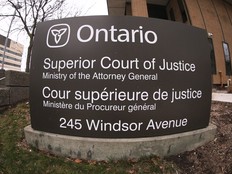WARMINGTON: Despite violent criminal career, system didn't keep cop killer locked up

Article content
Until this week, when he shot and killed Toronto Police Const. Andrew Hong, it seemed the only thing Sean Petrie hadn’t been charged with was murder.
Possession of a firearm, robbery, sexual assault, child pornography, prostitution procuring, trafficking, impaired driving and breaching bail conditions. The rap sheet of criminal charges before the courts against Petrie was so vast and varied that he had documents on the computer in four different Ontario courthouses.
Now authorities could add two counts of first-degree murder and three counts of attempted murder to his disturbing arrest record. Or, at least, they could if the 40-year-old wasn’t shot and killed in Hamilton while trying to escape from the murderous mayhem he left behind in Mississauga and Milton.
Federal parole documents obtained by the Toronto Sun say he had convictions for property crimes, robbery, drug trafficking and weapon possession.

Police on Tuesday were working to figure out which of the charges laid against him had resulted in convictions, were stayed or were still before the courts.
That he graduated to such sadistic violence is hardly a shock when you look at how often this man was in courthouses in Brampton, Toronto and Kitchener.
Police in three jurisdictions — Toronto, Peel and Halton — are investigating just what happened on Monday: the ambush that left Hong, 48, dead at a Tim Hortons in Mississauga; the murder of Shakeel Ashraf, 38, in his MK Auto Repairs garage in Milton; the wounding of two of Ashraf’s staffers; and a person wounded in a carjacking.
It’s clear this man was routinely in the clutches of the Canadian justice system. But why the hell was this menace not in prison?
Recommended video
As Sun columnist Michele Mandel discovered in his federal parole records, Petrie was considered such a public threat they slapped conditions on his statutory release like electronic monitoring, a curfew and orders to avoid drugs and associating with gang members.
“Your offence cycle as demonstrated by your criminal history is directly linked to the negative influence of criminal others, including those involved in the gang subculture,” the parole board wrote in August 2010. “Your involvement with these associates has led to your convictions for property crimes, robbery, drug trafficking and weapon possession.”
The board has said since “you have displayed a comfort with possessing cocaine and other narcotics for the purpose of trafficking.” They asked that he abstain from buying, possessing or using non-prescription drugs.
Ordering that he stay away from the Kipling Ave., Allen Rd., Eglinton Ave. and Steeles Ave. area — unless he had approval from his parole supervisor — the board let Petrie out on a statutory release from prison in 2012 with special conditions “to safely manage the risk that you present and are meant to promote your rehabilitation.”
As Mandel found out, Petrie’s score on “SIR (Statistical Information on Recidivism) was -3“ which means “one out of two” inmates go on to commit an indictable offence after their release.
That is one thing they got right.
Sadly, it has been proven he was one of the most dangerous criminals in Canada.














Postmedia is committed to maintaining a lively but civil forum for discussion. Please keep comments relevant and respectful. Comments may take up to an hour to appear on the site. You will receive an email if there is a reply to your comment, an update to a thread you follow or if a user you follow comments. Visit our Community Guidelines for more information.